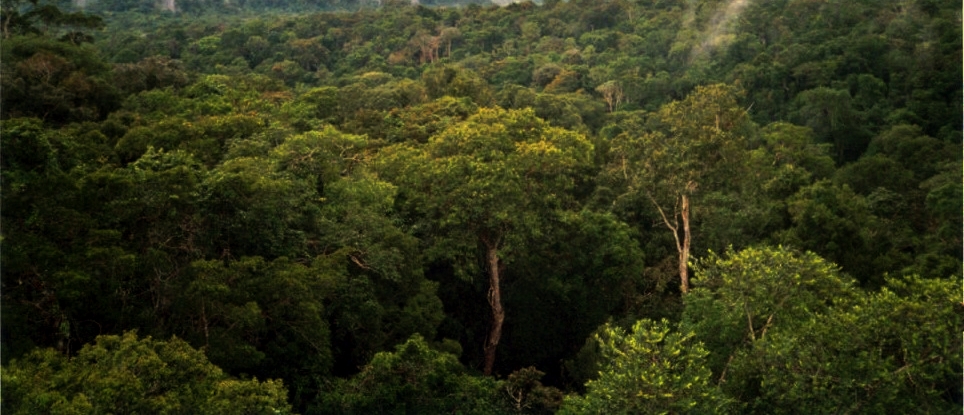Please note: Osher Rainforest will be closed for maintenance Jan. 14–16.
Science News
Rainforest Makes Rain
September 10, 2012

As much as we know about the Amazon water cycle, scientists are exploring further how it works. Two recent studies provide more evidence as to why deforestation in that region can be so devastating.
Last week, a letter published in Nature describes how scientists used newly available NASA satellite observations of rainfall and vegetation along with a model that predicts atmospheric wind flow patterns to explore the impact of Earth’s tropical forests. Their data show that the more vegetation the air had traveled over, the more moisture it carries and more rain is produced. Air passing over extensive tropical forests produces at least twice as much rain as air passing over little vegetation. In some cases these forests increased rainfall thousands of kilometers away.
“We were surprised to find that this effect occurs strongly across more than half of the tropics,” says lead author Dominick Spracklen. “We found that the Amazon and Congo forests maintain rainfall over the periphery of the forest basins—regions where large numbers of people live and rely on rainfall for their livelihoods. Our study implies that deforestation of the Amazon and Congo forests could have catastrophic consequences for the people living thousands of kilometers away in surrounding countries.”
In fact, their research estimates that destruction of tropical forests would reduce rain across the Amazon basin by up to 21% in the dry season by 2050.
Spracklen continues, “This has significant implications for how policy makers should consider the environmental impacts of deforestation, since its effects on rainfall patterns may be felt not only locally, but on a continental scale.”
Another study, published two weeks ago in Science, shows chemically how the rainforest “seeds its own rain.” A group of researchers, including our neighbors at the Advanced Light Source at Lawrence Berkeley National Laboratory (look for a Science in Action video about the ALS soon), examined aerosols from the air above a lush section of the Amazon rainforest.
Since water vapor needs something to condense upon, airborne particles become the seeds of liquid droplets in fog, mist and clouds. With examination, the researchers found that tiny grains of potassium salts are the basis of raindrops in the Amazon.
The salts are not generated by soot or the nearby Atlantic Ocean, but by the living things in the rainforest. Fungal spores seem to be one of the biggest contributors. In other words, the forest itself is causing the rain.
Image: Phil P Harris/Wikipedia